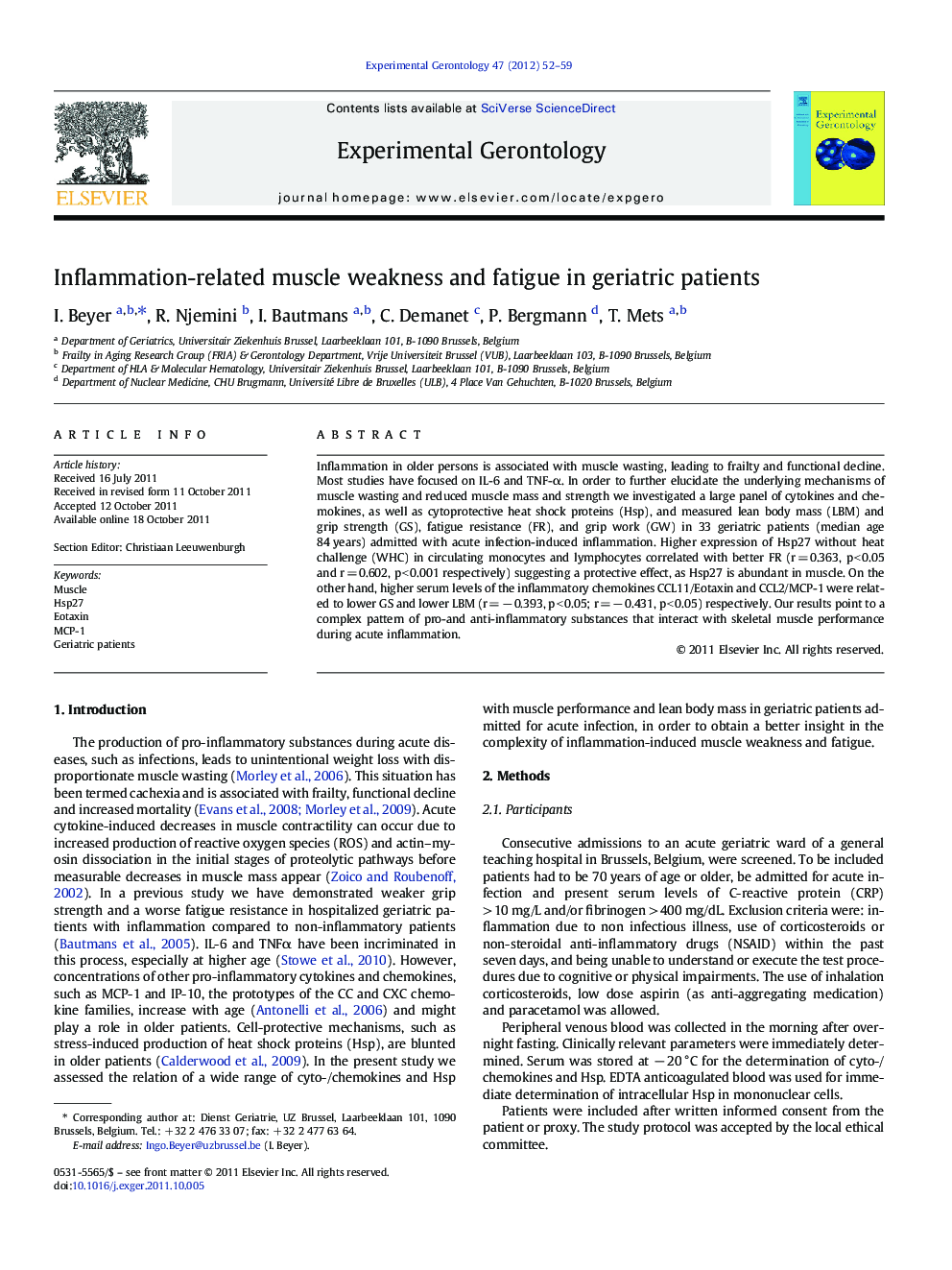| Article ID | Journal | Published Year | Pages | File Type |
|---|---|---|---|---|
| 1906407 | Experimental Gerontology | 2012 | 8 Pages |
Inflammation in older persons is associated with muscle wasting, leading to frailty and functional decline. Most studies have focused on IL-6 and TNF-α. In order to further elucidate the underlying mechanisms of muscle wasting and reduced muscle mass and strength we investigated a large panel of cytokines and chemokines, as well as cytoprotective heat shock proteins (Hsp), and measured lean body mass (LBM) and grip strength (GS), fatigue resistance (FR), and grip work (GW) in 33 geriatric patients (median age 84 years) admitted with acute infection-induced inflammation. Higher expression of Hsp27 without heat challenge (WHC) in circulating monocytes and lymphocytes correlated with better FR (r = 0.363, p < 0.05 and r = 0.602, p < 0.001 respectively) suggesting a protective effect, as Hsp27 is abundant in muscle. On the other hand, higher serum levels of the inflammatory chemokines CCL11/Eotaxin and CCL2/MCP-1 were related to lower GS and lower LBM (r = − 0.393, p < 0.05; r = − 0.431, p < 0.05) respectively. Our results point to a complex pattern of pro-and anti-inflammatory substances that interact with skeletal muscle performance during acute inflammation.
► Muscle weakness is frequently observed in hospitalized geriatric patients. ► Decreased muscle performance leads to functional decline. ► Complex interactions of pro- and anti-inflammatory substances are involved. ► The presented results unravelled some aspects of this complexity. ► Identifying potentially modifiable factors related to muscle weakness is crucial.
